- Categories
- Karting
- Child Karting
- Car
- Motorcycle
- Rallye
- Already got a helmet?
- Paintwork only

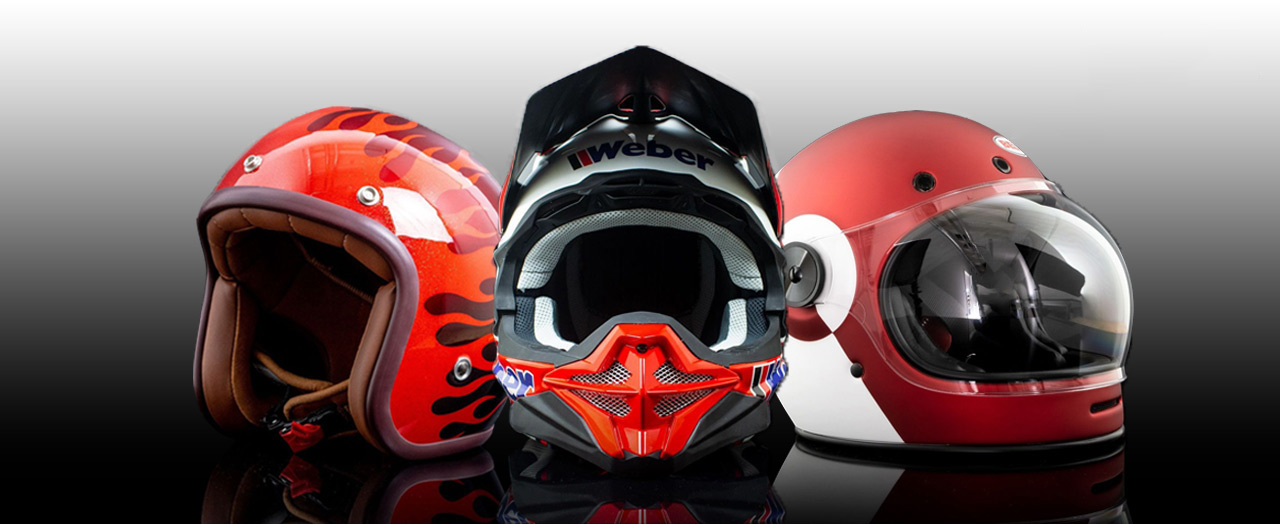
Motorcycle helmets belong to the most important protective equipment of a motorcyclist. In Germany, helmets have been compulsory for motorcyclists since 1976, for moped riders since 1978. And not without reason. Motorcycle helmets protect the head from injury and can save lives in the event of an accident. But they are not only for safety, they also provide a better riding experience. They keep your head warm and protect your face from rain, hail, wind, dirt and insects. Additionally, with an unique design, you can make sure that all eyes are on you.
In this article, we'll take a closer look at motorcycle helmets. We´ll examine the different types of helmets, explain what components make up a motorcycle helmet, and help you determine the right helmet size. After all, not all motorcycle helmets are the same. There are different types of helmets that offer different levels of protection and features. Which type of helmet is best for you also depends on what kind of biker you are. Do you like to ride longer tours or only short distances within the city? Or are you more into outdoor terrain? Whether you're an experienced rider or just getting started with motorcycling, this article will surely help you make an informed decision about your helmet. Because before you decide to have your motorcycle helmet painted by us, the first step is to choose a suitable model.
If you're in the process of buying a helmet, you should superior what your daily biking routine looks like. If you like to go on long motorcycle trips on the weekend, an integral helmet might be the right choice. If you ride motocross or enduro, a special cross helmet will suit you better. However, if you only ride short distances within the city, a jet helmet is often the more comfortable option. Each helmet has different safety standards and features. You can find out what these are in the following.
The classic among motorcycle helmets is the integral helmet. It is one of the safest types of motorcycle helmets and is preferred by many motorcyclists on the road and on the race track. The chin bar of an integral helmet is fixed and the visor can be closed. It covers the entire head and face of the rider, providing the best protection in the event of an accident. Among all helmet types, the full-face helmet can best dampen driving noise because it completely encloses the head.
There are integral helmet models designed for simple road use, as well as those that can be used specifically for motorcycle racing. Integral racing helmets are often lighter, which means that the rider's neck is not subjected to as much stress as with a normal full-face helmet for the road. In addition to their weight, racing helmets also feature better ventilation and a larger field of vision. Both integral racing helmets and street helmets usually have a Double-D ring closure, which is one of the easiest closures to use. However, other closures may also be found.
Overall, a full-face helmet is a good choice for any motorcyclist looking for the best possible protection on the road. It's especially good if you're riding long distances, as the helmet offers an excellent combination of safety, comfort, and functionality. Like that you should be well equipped for your Sunday tour.
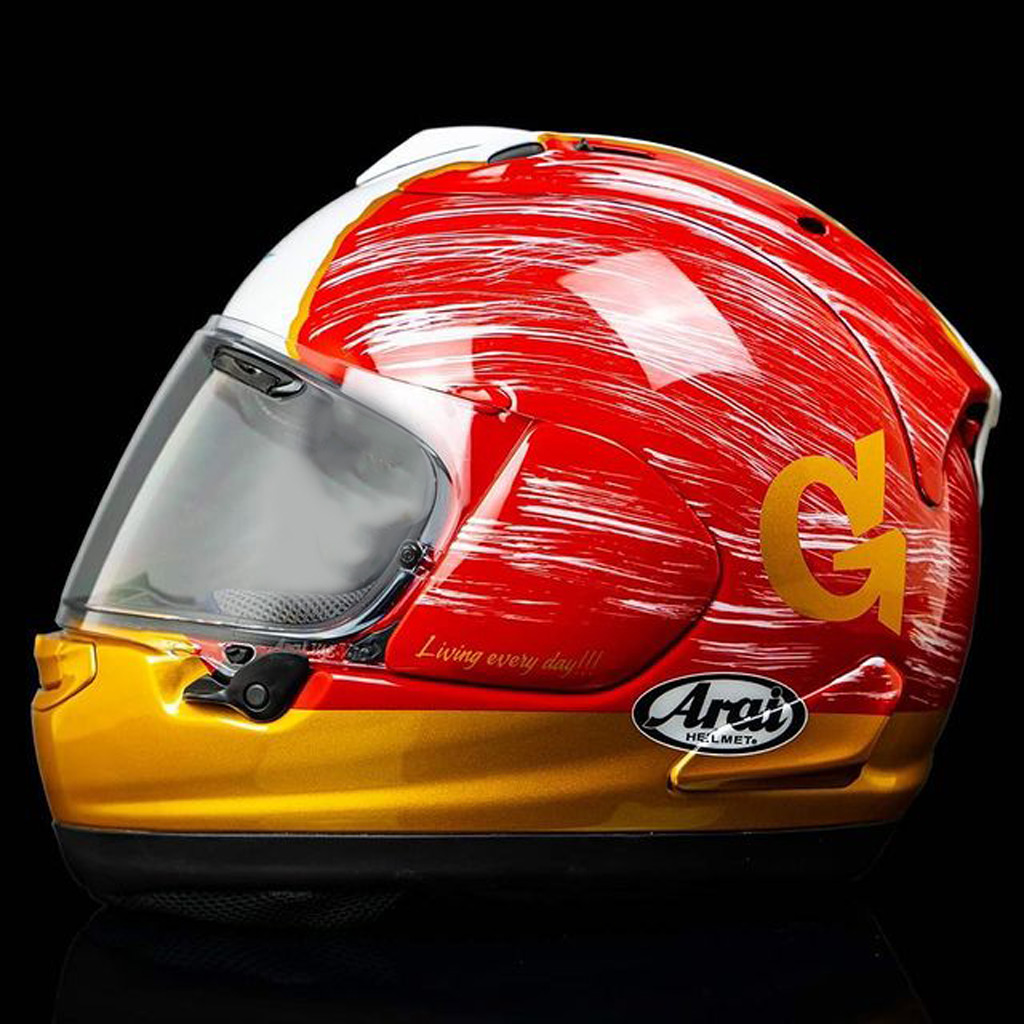
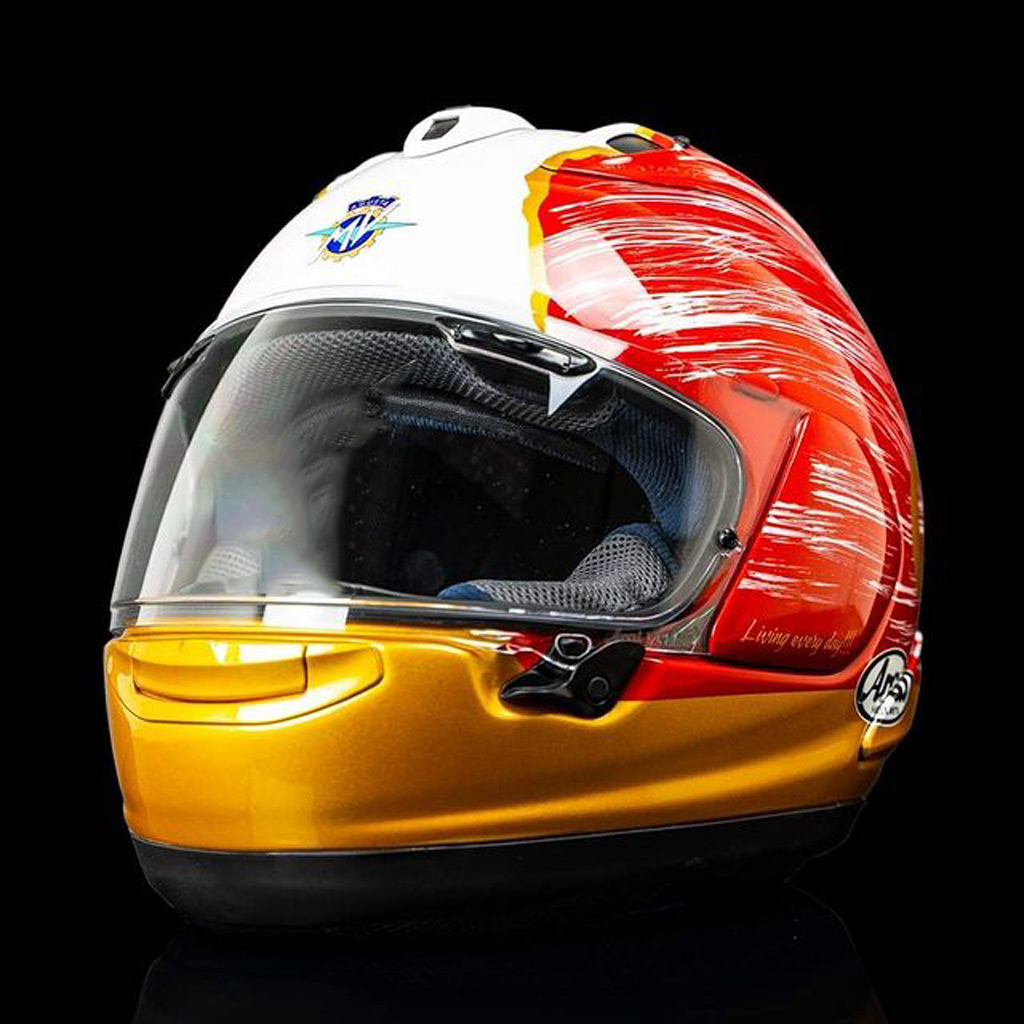
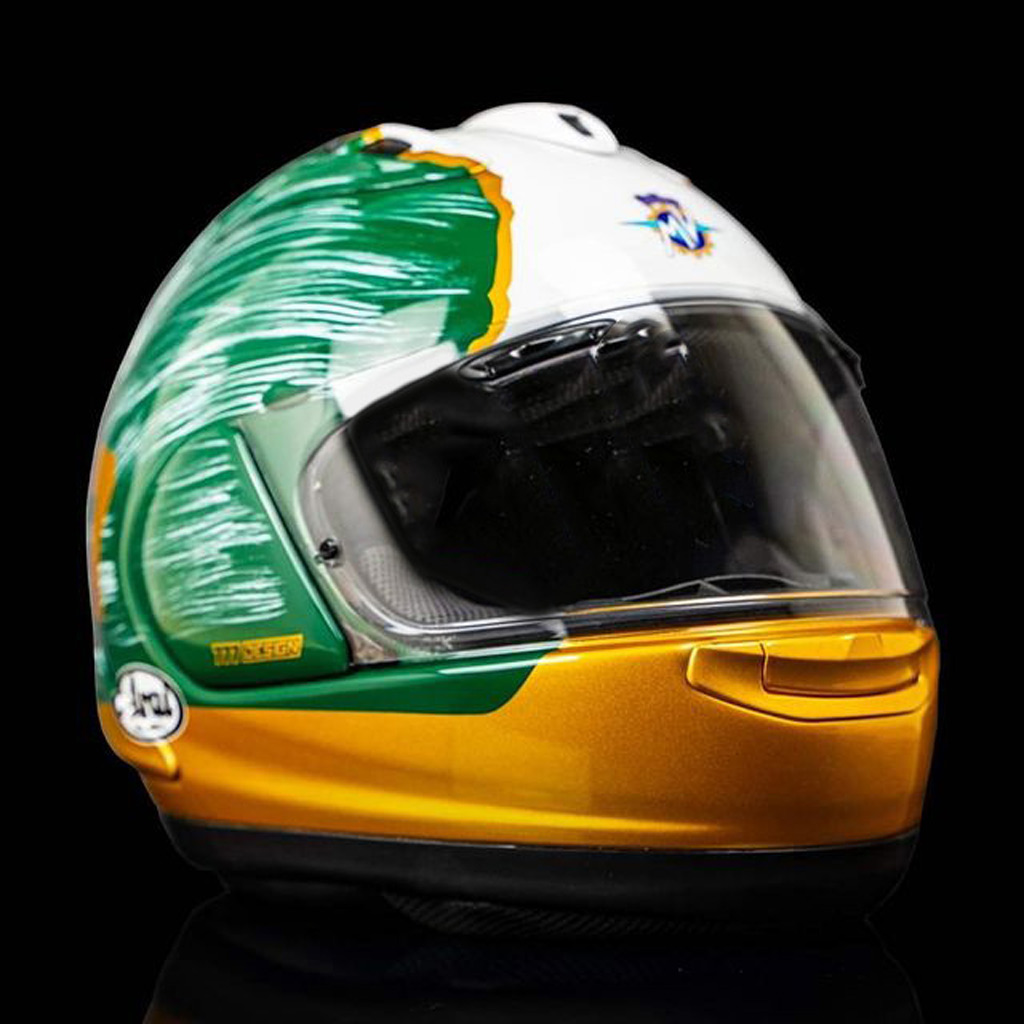
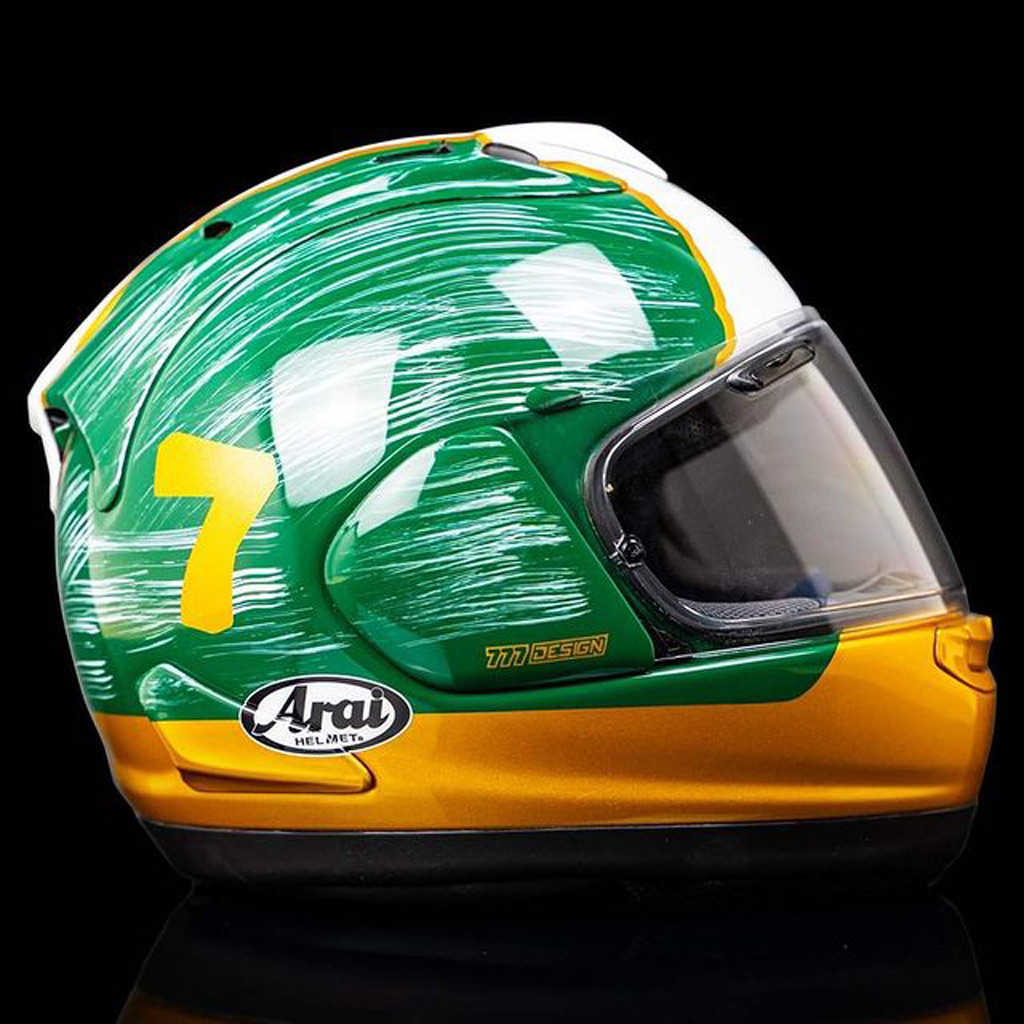
The jet helmet embodies an unmistakable retro look. It covers your head and forehead, but unlike the full-face helmet, it has no chin and face protection. Accordingly, the safety is not as much guaranteed as with the integral helmet and is therefore not suitable for riding at higher speeds on long distances. In addition, the driving noises are also not as well muffled as, for example, with the full-face helmet, which can be extremely unpleasant.
However, if you are not the type to ride your motorcycle for long tours or you prefer to ride a scooter anyway, a jet helmet is more than sufficient. Because most jet helmets don't have a visor or only a small sun visor, the wind blows in your face and you feel like you're back in the 70s. If you want, you can also get a helmet that allows you to attach a removable visor, so you can use your jet helmet in bad weather conditions. Optionally, you can also get special motorcycle goggles, which will give you a special vintage look.
The jet helmet is ideal if you prefer a lightweight helmet and a classic design. It does not offer the same protection as a full-face helmet, but still has reasonable safety and is very comfortable to wear. The only important thing is that the helmet does not slip and is well tightened. However, if you are going for a longer ride or want to go faster, you should consider a full-face helmet to ensure the best possible protection.
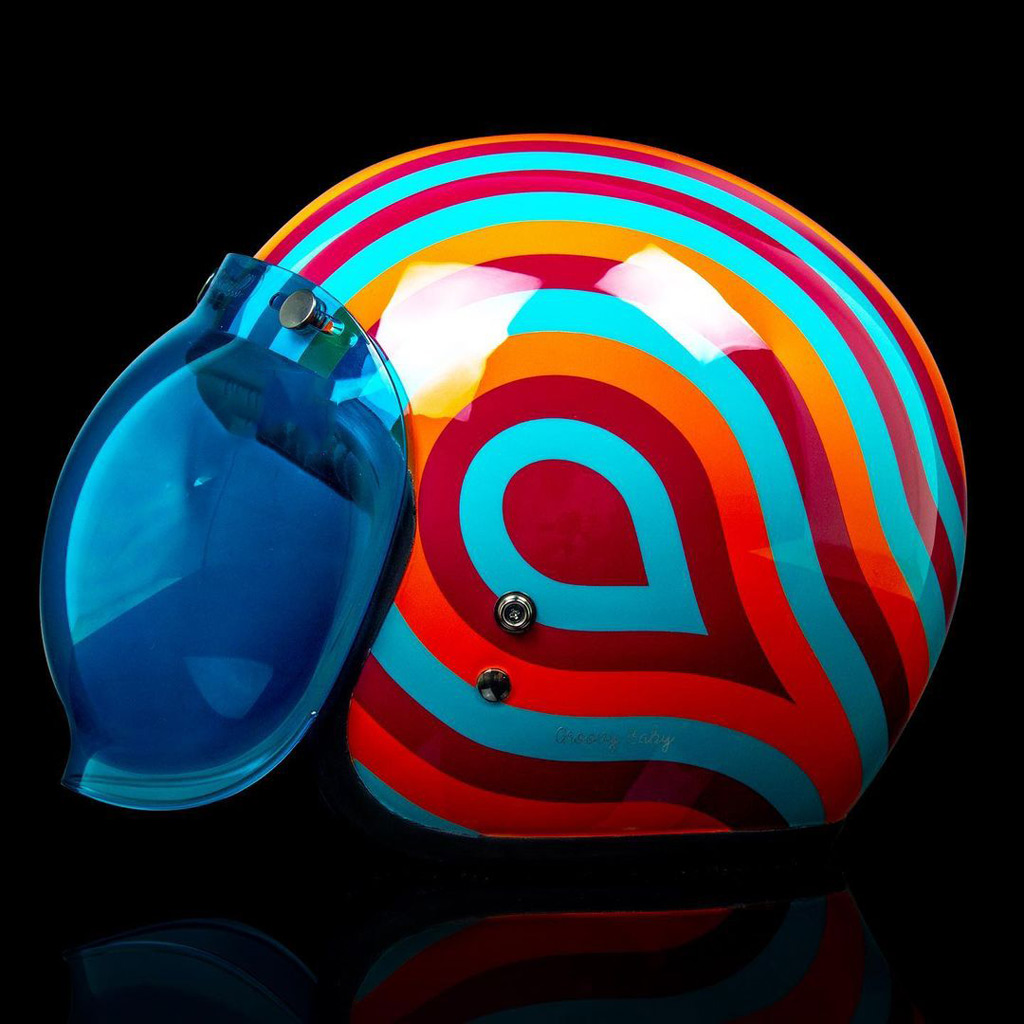
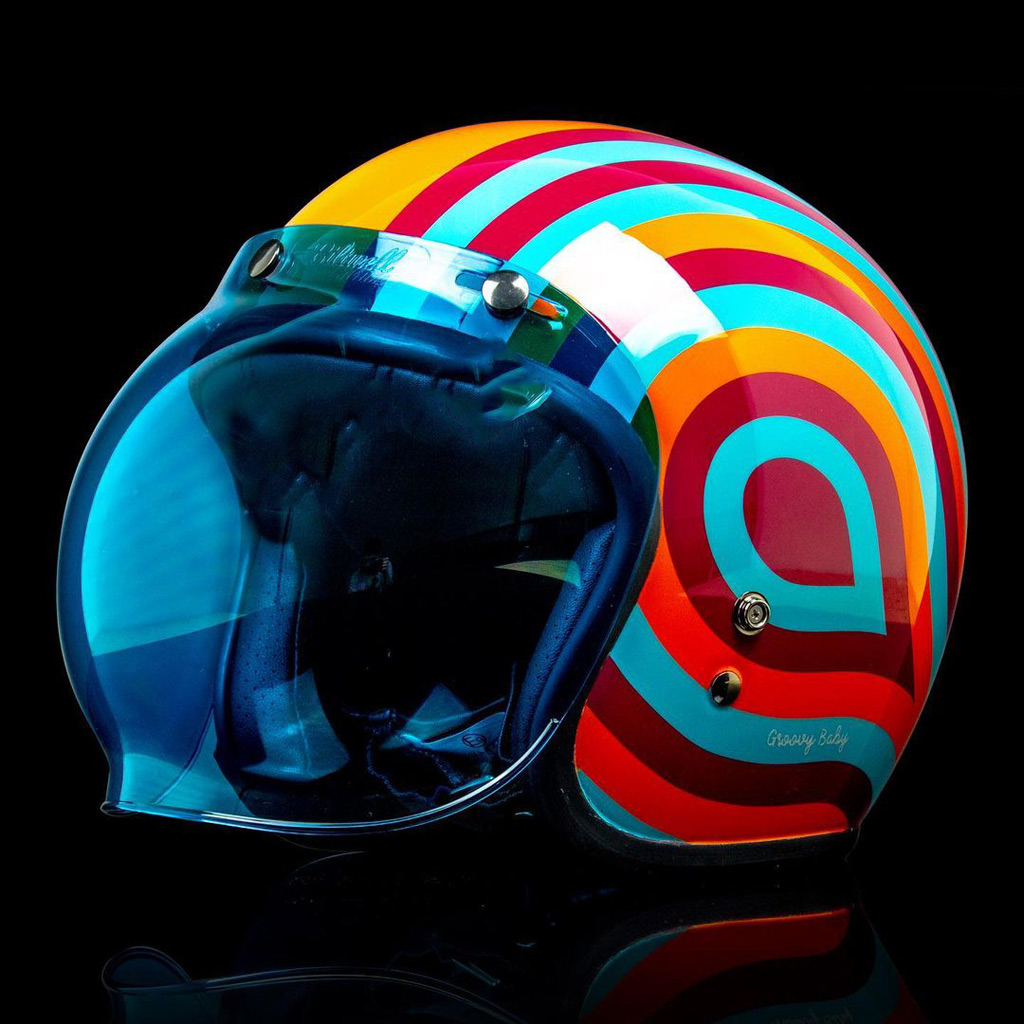
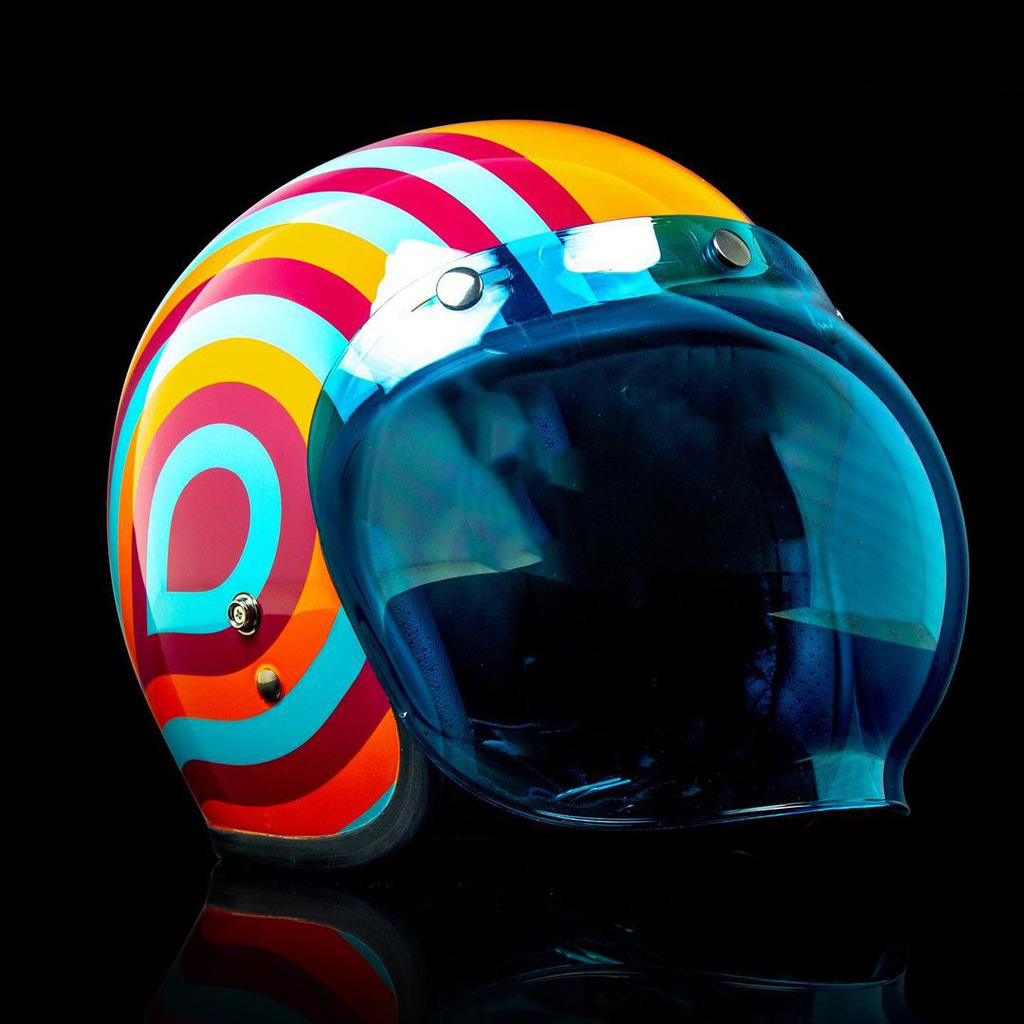
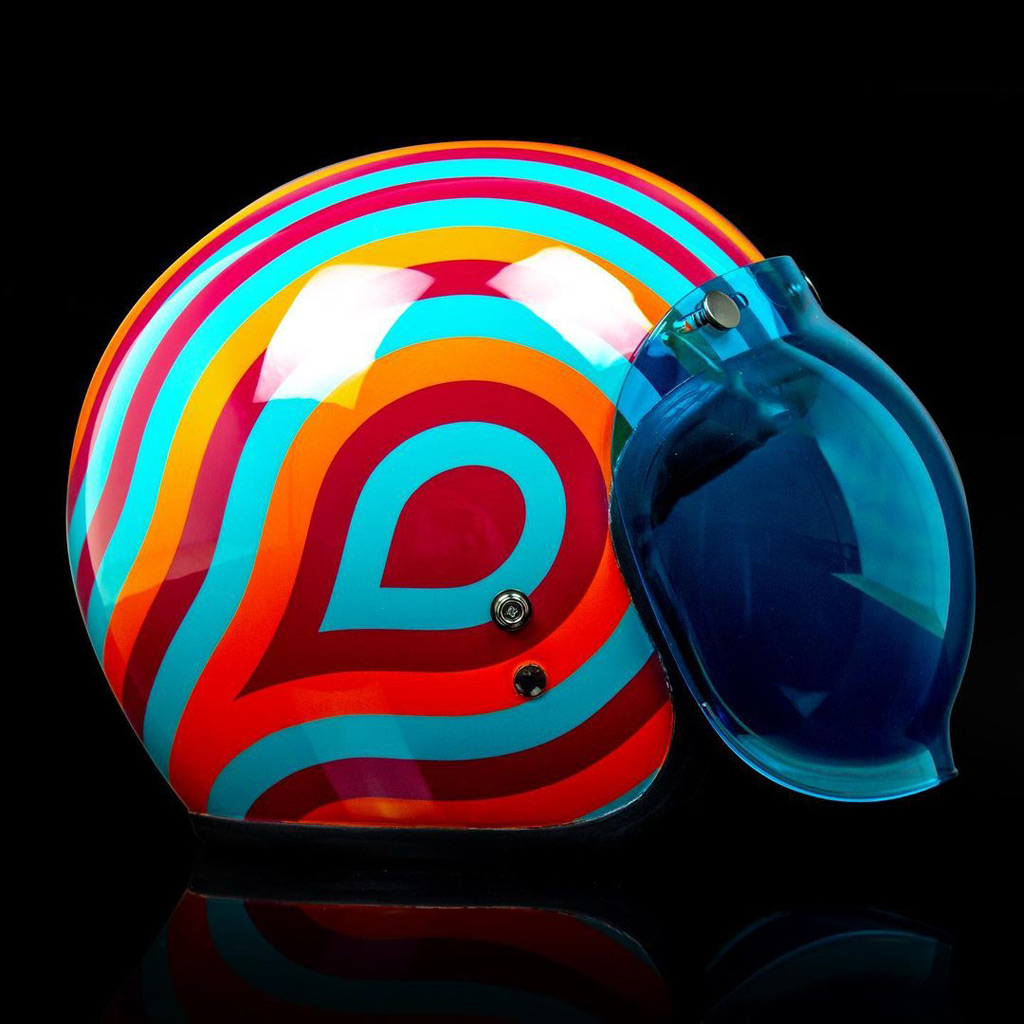
Motocross helmets, as the name suggests, have been designed specifically for off-road use. They are designed to protect the rider's head from the harsh conditions of off-road riding. Since falls are not uncommon in motocross, the safety of the helmet is paramount. The helmet has an extended chin area to protect the face in the event of an impact, while also providing good ventilation. The large shield also provides a bit more safety and also serves as a sun visor. In addition, it has a particularly large opening around the eyes. This is because in motocross it is common to use special glasses. Accordingly, most cross helmets also have no visor.
A mixture of cross helmet and full-face helmet is the enduro helmet. Enduro is similar to motocross also an off-road sport that takes place in nature. The difference, however, is that the routes are much longer (sometimes up to 130 kilometers), which makes the enduro sport much more demanding. Accordingly, the helmet must also be adapted to the unpredictable conditions of the sport. Enduro helmets are similar to motocross helmets, but are also designed to protect against different weather conditions, which is why most enduro helmets also have a visor, unlike the cross helmet.
A motocross helmet or enduro helmet is ideal for any off-road rider who likes to ride on bumpy terrain. It offers the best possible protection against head injuries after falls, because especially in this sport accidents can hardly be avoided. You can also use your cross helmet in road traffic, but this is impractical due to the special design. Due to the long chin section, the shield and the mostly open visor, there would be air turbulence in your helmet. However, if you absolutely want to wear a cross helmet for style reasons, an enduro helmet is the better choice, as it offers significantly more comfort. In the best case, however, you should simply get an integral helmet for road traffic.
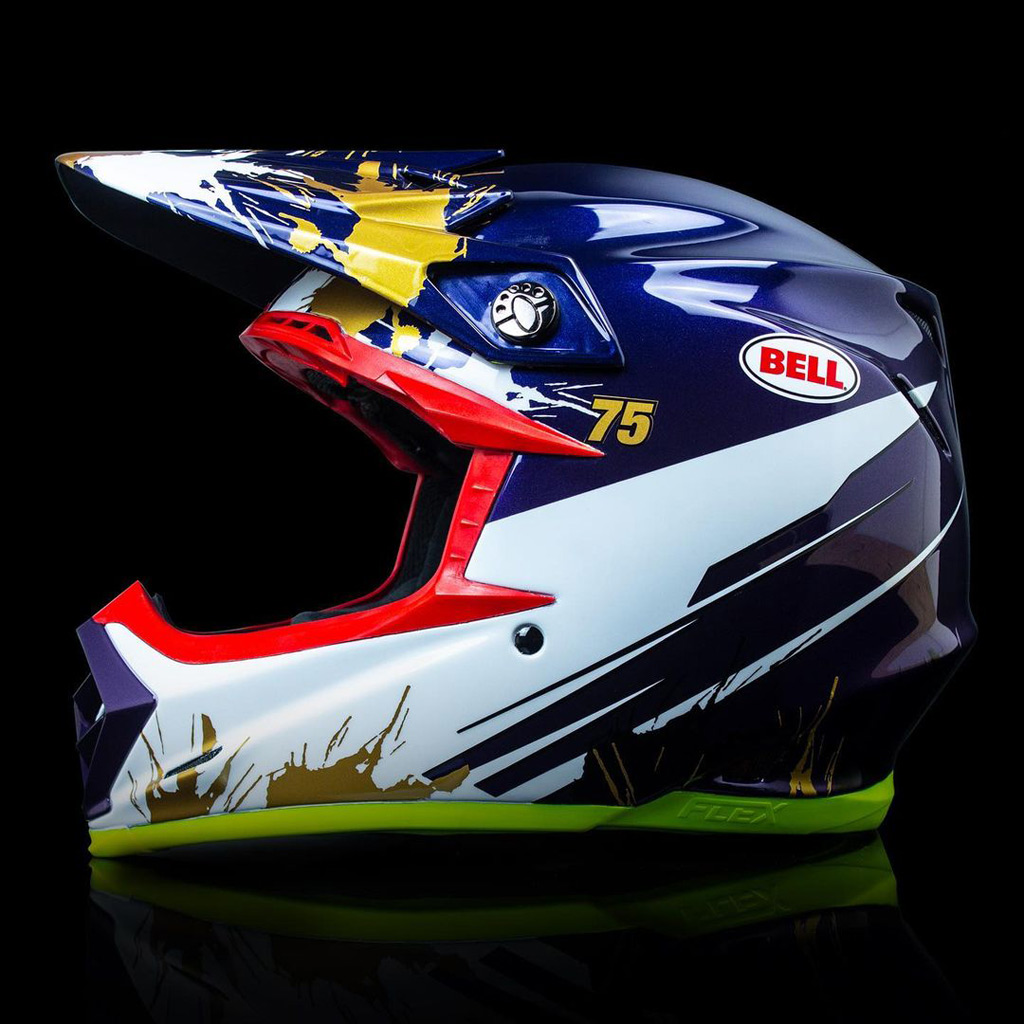
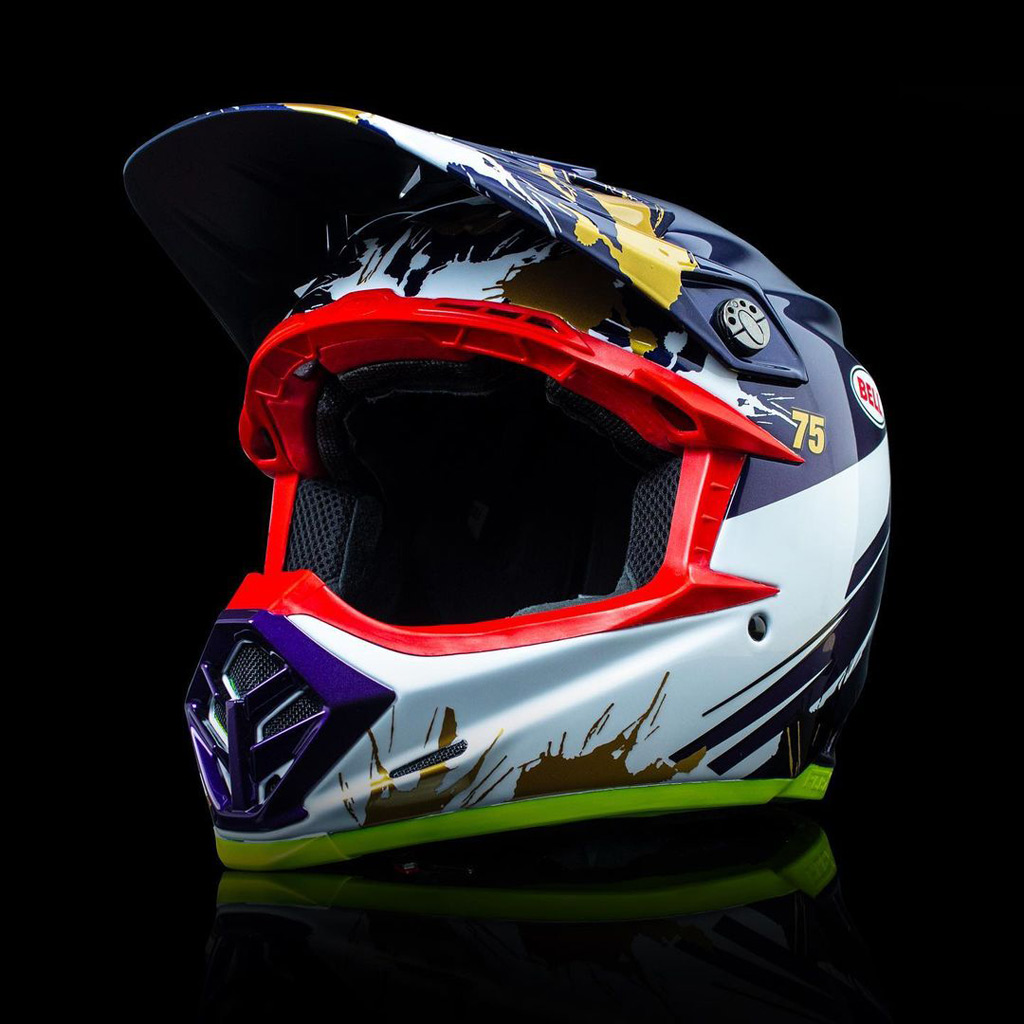
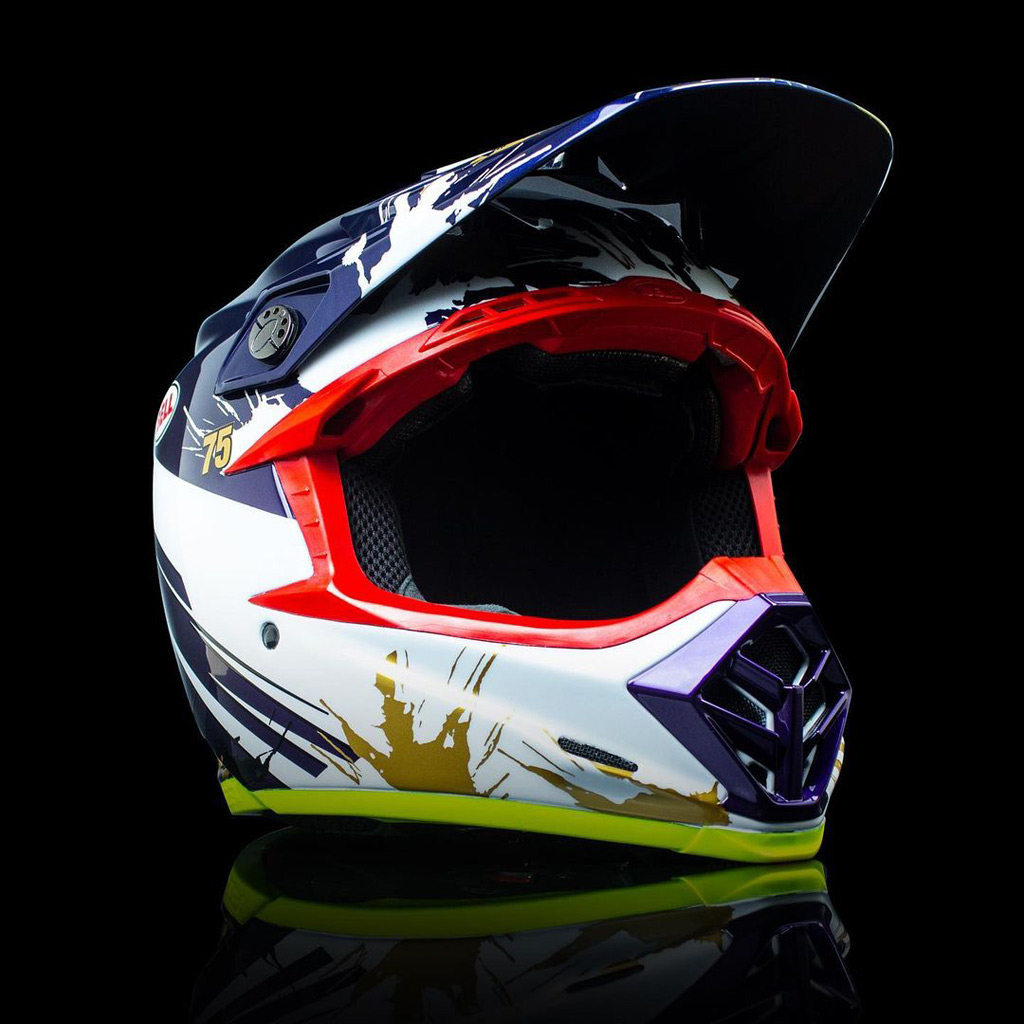
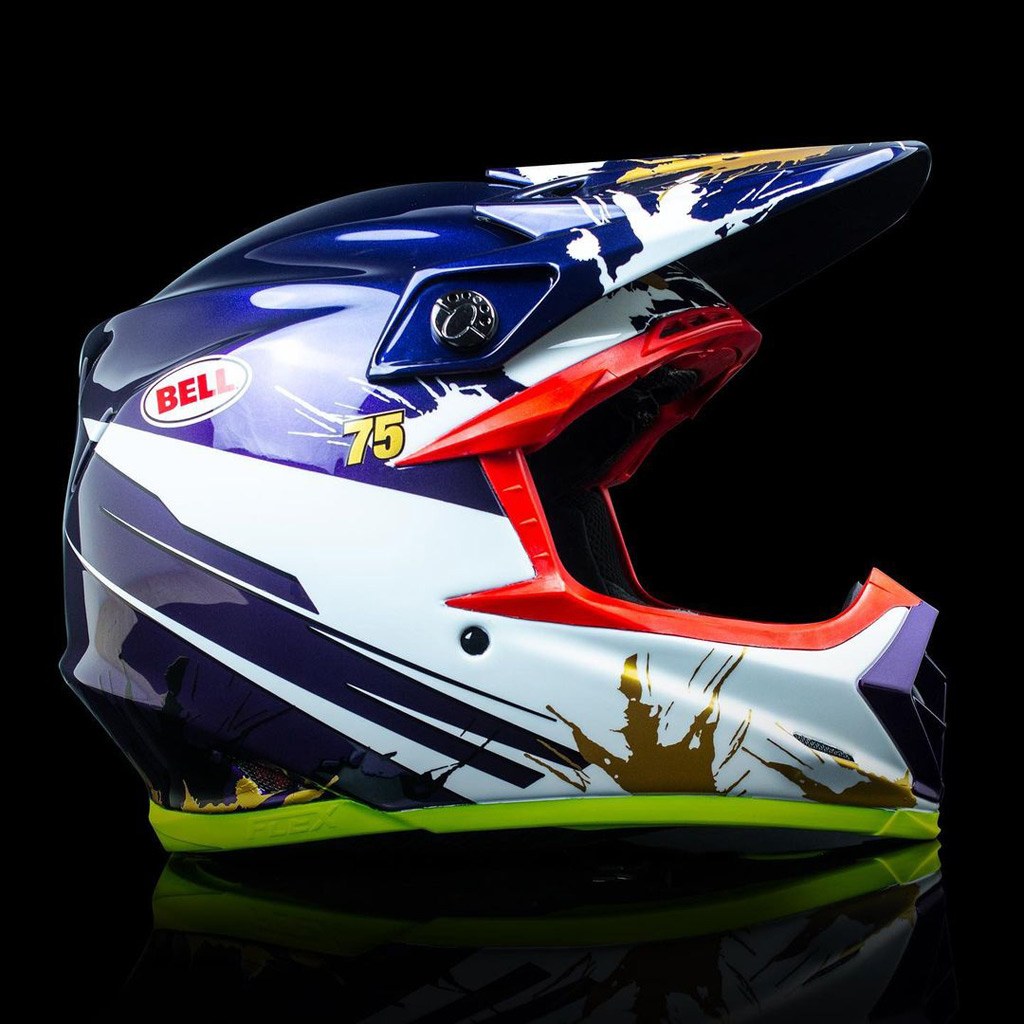
The outer shell is the most important component of a motorcycle helmet. Most of the energy generated in an impact is dissipated by it. Accordingly, this layer must be very robust and resistant.
Two material groups that are repeatedly mentioned in connection with helmet shells are thermoplastics and thermosetting plastics. Thermoplastics, such as polycarbonate or polyamide, are generally easier to produce, which makes the helmets less expensive. Meanwhile, thermosets, which, for example, include carbon or glass-fiber-reinforced plastic, are costly to produce, making the end product more expensive. But don't worry: Helmets made from thermoplastic materials don't offer worse protection just because they're cheaper. Instead, they differ in other ways, such as durability. A thermoset outer shell will last at least 8 years, even with regular use, while a thermoplastic outer shell has a shorter lifespan and wears out faster.
Depending on the model, there are again different variants of visors, but almost all of them are made of polycarbonate. This transparent plastic is the most suitable because its hardness allows it to fight against the conditions of driving. No splinters can occur during impacts and it is also resistant to hard blows.
A big problem, which every motorcyclist knows, is the fogging of the visor, especially in cold temperatures. Due to the temperature difference inside and outside the helmet, the visor fogs up. First of all, this is annoying, and second, it jeopardizes your safety by taking away your view of the road. An ideal solution is a double visor with the so-called pinlock system. An inner visor attached to two plastic pins is connected to the main visor, creating a kind of closed air cushion. The inner pinlock visor thus no longer cools down with the cold air from outside, which ensures that the visor no longer fogs up and you have a clear view.
Every helmet model comes with a matching visor. Mostly you can choose between different tints. From transparent to mirrored visors, there are countless variants in a wide variety of colors. With mirrored and heavily tinted visors, it is important to note that in Germany a special test mark is required and their use is only permitted in appropriate weather and during the day. In other countries they are even completely forbidden. Before you travel abroad, you should therefore always inform yourself about current regulations!
The inner shell is made of expanded polystyrene (EPS) or styrofoam, which ensures that it remains particularly light. In the event of an impact, the inner shell is compressed and has a shock-absorbing character. The energy that the outer shell initially absorbs in an impact is transferred to the inner shell. It is thus distributed over a wide area and does not hit the head directly.
The foam inner padding is ultimately responsible for ensuring that the motorcycle helmet fits snugly and that you have a good grip. At the same time, the padding should provide a comfortable feeling, so that the helmet lies softly on the head. Most of the time, the padding is removable so you can wash it. Since the lining absorbs your sweat and transfers it from your head to the fabric of the pad, you should try to clean it as often as possible.
For the best way to do that, check out our helmet cleaning article, where we give you several tips on how to care for your helmet shell, visor and inner cushion.
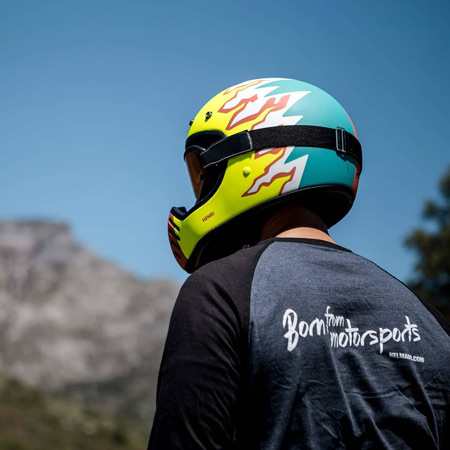
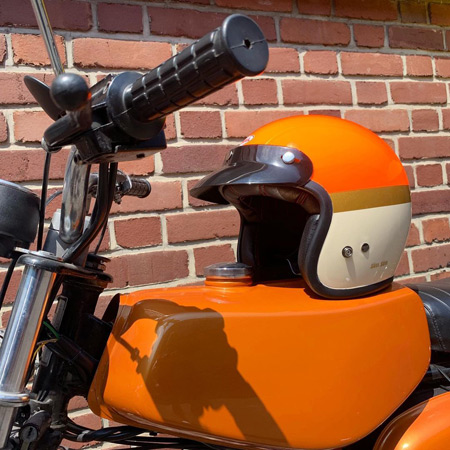
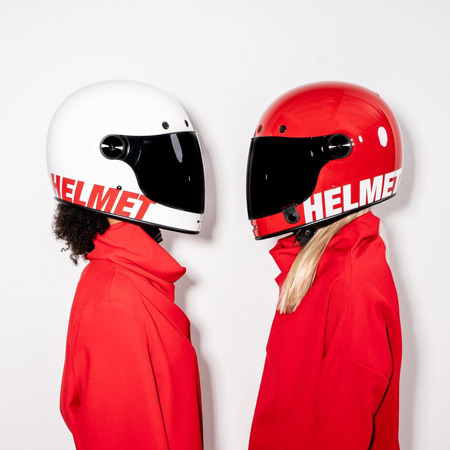
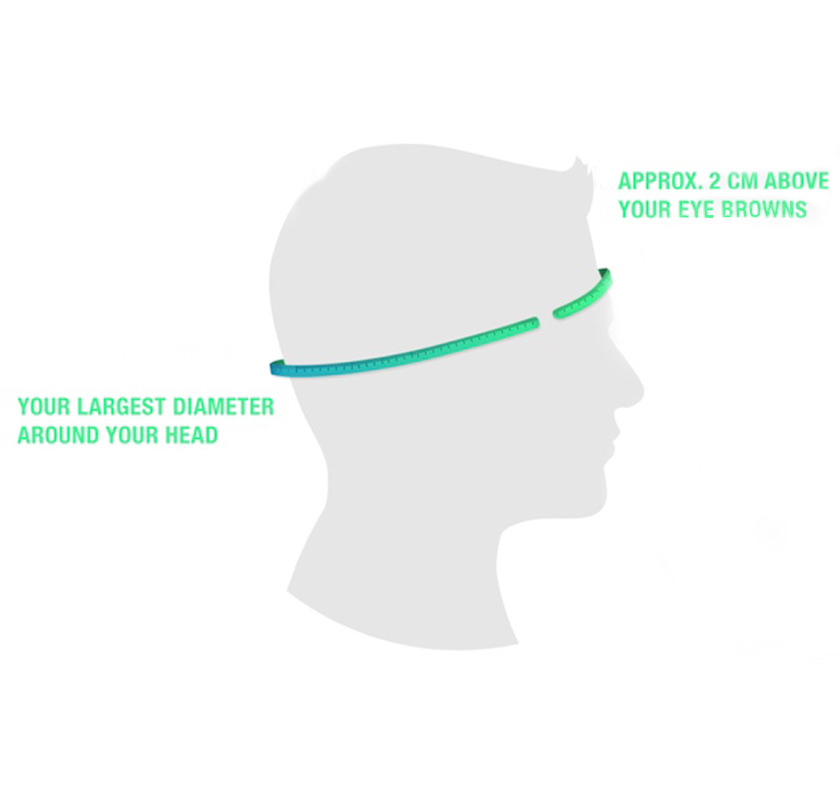
No matter what type of motorcycle helmet you own, the fit plays a big role. If your helmet is too big and slips, it won't provide the safety you want. If it's too small, it pinches in some places and you feel constricted. It needs to fit perfectly.
Determining your helmet size is not difficult. You can measure your head circumference from the comfort of your own home and then use our size chart to help you determine the right helmet size. You only need a flexible measuring tape, which you wrap around the widest part of your head. This is located above your ears and about 2 cm above your eyebrows. Then, before you buy, you can read from the size chart which size fits you depending on the model.
The first time you wear it, it may feel a little strange at first. Therefore, keep the helmet on for a while before you make a decision. Often, you have to get used to the fit of the helmet first. If the motorcycle helmet continues to chafe or create uncomfortable pressure points after that, you'll need to get a larger size. If it fits too loosely, a smaller size.
In addition to the helmet size, there may also be a difference in fit between different manufacturers. Therefore, it may be a good idea to try on a motorcycle helmet before buying it. You are welcome to come to our showroom in Frankfurt and let us advise you on your helmet size. If you have any other questions about your helmet size, please feel free to contact us by e-mail at service@helmade.com.
A motorcycle helmet is primarily responsible for your safety. We recommend that you check whether your helmet complies with the current ECE test standard before making a purchase. This ensures that your motorcycle helmet complies with the European regulations for a safe helmet. You can tell if it has been tested accordingly by the patch in the inner cushion or on the fastener of the helmet.
We also advise you to change your helmet after an accident, because the protection after an impact can no longer be 100% guaranteed. Otherwise, you should replace your motorcycle helmet with a new one after about five years of regular use.
We hope that with this guide we could help you to choose the right motorcycle helmet. At helmade you can find motorcycle helmets of all helmet types from the brands Bell, Shoei, Arai, and many more. You can also have any motorcycle helmet painted. Either you use our 3D configurator and create a cool design from our countless templates or you get a completely customized product. The best way to do this is to contact us at service@helmade.com and explain your design wishes (inspirations, logos, etc.).